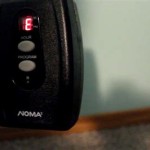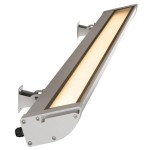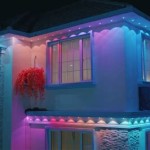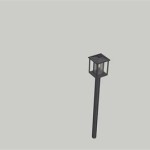How To Hang Outdoor Lights On A Patio
Transforming a patio into a welcoming and visually appealing outdoor space often involves strategic lighting. Outdoor lights not only enhance the aesthetic appeal but also extend the usability of the patio into the evening hours. Proper installation is crucial for safety, longevity, and achieving the desired ambiance. This article provides a detailed guide on how to hang outdoor lights on a patio, covering planning, necessary materials, installation techniques, and safety considerations.
Planning and Preparation
Before commencing the installation process, meticulous planning is essential. This phase involves assessing the patio's layout, selecting the appropriate type of lighting, determining the power source, and considering any structural limitations.
Firstly, evaluate the patio's dimensions and the desired lighting effect. Consider the existing structures, such as the house, fences, trees, or any overhead cover like a pergola or awning. These elements will influence the placement and type of lights you choose. Decide on the overall ambiance you wish to create – a soft, romantic glow, task lighting for dining, or a combination of both. This will help determine the brightness and color temperature of the lights.
Next, select the appropriate type of outdoor lights. String lights, also known as bistro lights or fairy lights, are a popular choice for patios due to their ease of installation and festive appearance. These lights are typically available with incandescent, LED, or solar-powered bulbs. LED lights are generally preferred for their energy efficiency and longer lifespan. Other options include pendant lights, wall-mounted lights, and pathway lights, although these might require more permanent installation and electrical work.
Determine the power source for the lights. If using electric lights, identify the nearest outdoor outlet. If an outlet is not readily available, extending an existing circuit or installing a new one might be necessary. This task should be performed by a qualified electrician to ensure safety and compliance with local electrical codes. Solar-powered lights offer an alternative, eliminating the need for electrical wiring, but their brightness and reliability may be affected by weather conditions and the amount of sunlight they receive.
Finally, assess the structural integrity of any points you intend to use for hanging the lights. Ensure that posts, railings, or overhangs are strong enough to support the weight of the lights and any associated hardware. Weak or damaged structures should be reinforced or avoided altogether. Consider the wind conditions in your area. High winds can put extra stress on the lights and their supports, so choose durable materials and secure mounting methods.
Materials and Tools
Having the right materials and tools on hand will streamline the installation process and ensure a professional-looking result. Here is a comprehensive list of the items you will likely need:
Outdoor Lights: Select the appropriate type and length of lights based on your planning. Ensure the lights are specifically designed for outdoor use and are rated for weather resistance (e.g., UL Listed for wet locations).
Hanging Hardware: This will depend on the type of support structures available. Options include:
- Screw-in Hooks: Suitable for wood posts or fences.
- Eye Hooks: Similar to screw-in hooks but with a closed loop for added security.
- S-Hooks: Used to connect the lights to eye hooks or other attachment points.
- Zip Ties: Useful for attaching lights to railings or wires. Choose UV-resistant zip ties for outdoor durability.
- Wire Rope and Tensioners: For creating a support system when hanging lights across open spaces.
- Snap Hooks: Allow for easy attachment and detachment of lights.
- Adhesive Clips: For temporary or lightweight installations on smooth surfaces. However, their long-term reliability in outdoor conditions may be limited.
Support Wire (Optional): If spanning a large distance without existing support, a wire rope is essential to support the weight of the lights and prevent sagging. Choose a galvanized or stainless steel wire rope for rust resistance.
Measuring Tape: To accurately measure distances and plan the light placement.
Ladder or Step Stool: To reach high areas safely.
Drill (Optional): For pre-drilling holes for screw-in hooks or eye hooks.
Screwdriver: To install screw-in hooks or eye hooks.
Pliers: For cutting wire rope or tightening connections.
Wire Cutters: For cutting zip ties or wire.
Electrical Extension Cord (Outdoor Rated): If needed to reach the power outlet. Ensure the cord is rated for outdoor use and can handle the power load of the lights.
Electrical Tape: For securing connections or protecting exposed wires.
Safety Glasses: To protect your eyes from debris.
Gloves: To protect your hands.
Installation Techniques and Safety
The installation process will vary depending on the type of lights, the support structures available, and the desired aesthetic. However, the following general steps and safety precautions should be followed:
Step 1: Prepare the Support Structure: Install the chosen hanging hardware (screw-in hooks, eye hooks, etc.) at the predetermined locations. If using screw-in hooks or eye hooks, pre-drilling pilot holes can make installation easier, especially in hard wood. Ensure the hooks are securely fastened and can support the weight of the lights.
Step 2: Create a Support System (If Necessary): If spanning a large distance without existing support, install a wire rope between two anchor points. Use tensioners to tighten the wire and prevent sagging. The wire rope should be strong enough to support the weight of the lights and any additional stress from wind or snow.
Step 3: Hang the Lights: Attach the lights to the hanging hardware using S-hooks, zip ties, or snap hooks. Start at one end and work your way along the planned route. Ensure the lights are evenly spaced and securely fastened. Avoid creating sharp bends or kinks in the light strings, as this can damage the wiring. If using zip ties, trim the excess material after securing the lights.
Step 4: Connect to Power Source: Plug the lights into the outdoor outlet or extension cord. Ensure the connections are secure and protected from moisture. If using an extension cord, elevate the connection point to prevent water from pooling around it. Consider using a weatherproof outlet cover to protect the outlet from rain and snow.
Step 5: Test the Lights: Turn on the lights to ensure they are working properly. If any bulbs are not lit, check the connections and replace the bulbs as needed. Inspect the wiring for any signs of damage or wear.
Safety Considerations: Electrical safety is paramount when installing outdoor lights. Always follow these precautions:
- Turn off the power at the circuit breaker before working with electrical wiring.
- Use outdoor-rated lights and extension cords that are specifically designed for wet locations.
- Avoid overloading circuits by checking the amperage rating of the lights and the circuit.
- Keep electrical connections away from water.
- Inspect the lights and wiring regularly for any signs of damage.
- Consider using a Ground Fault Circuit Interrupter (GFCI) outlet to protect against electrical shock.
- If you are not comfortable working with electricity, hire a qualified electrician.
Alternative Hanging Methods
While hooks and wire are common, there are alternative methods for hanging patio lights, each with its own advantages and disadvantages. These methods can be particularly useful for renters or those seeking a less permanent installation.
Clothespins: For lightweight string lights, clothespins can be used to clip the lights to railings, fences, or even tree branches. This is a simple and inexpensive option, but it may not be suitable for heavier lights or windy conditions.
Magnetic Hooks: If you have metal surfaces on your patio, magnetic hooks can provide a convenient attachment point for lights. Ensure the hooks are strong enough to support the weight of the lights and are rated for outdoor use.
Gutter Hooks: These hooks are designed to attach to gutters and can be used to hang lights along the perimeter of your patio. This option is particularly useful if you have gutters close to the area you want to illuminate.
Freestanding Poles: If you lack existing support structures, consider using freestanding poles to hang your lights. These poles can be placed anywhere on your patio and provide a stable and versatile support system. Options range from simple metal poles to decorative wooden posts.
Using Trees: Natural tree branches can serve as a unique and aesthetically pleasing support for patio lights. Be mindful of the tree's health; avoid using excessive weight or damaging the bark. Secure lights loosely to allow for natural movement during wind events.
Consider the long-term effects: Think about how any chosen method will impact the appearance and functionality of your patio over time. For instance, adhesive methods may leave residue, while certain fastening techniques might cause damage to surfaces during removal.

28 Backyard Lighting Ideas How To Hang Outdoor String Lights

How To Hang Outdoor String Lights And Make Them Look Good Wirecutter

How To Hang String Lights 10 Diffe Ways Jessica Welling Interiors

How To Hang String Lights Outdoors

How To Hang Outdoor String Lights The Ultimate Guide Jessica Welling Interiors

Diy Outdoor Patio String Lights Landscape Lighting Guru

How To Hang Outdoor String Lights A Step By Guide Govee

How To Hang Outdoor String Lights And Make Them Look Good Wirecutter

How To Hang Outdoor String Lights Flip The Switch

How To Hang Outdoor String Lights Step By Guide
Related Posts







